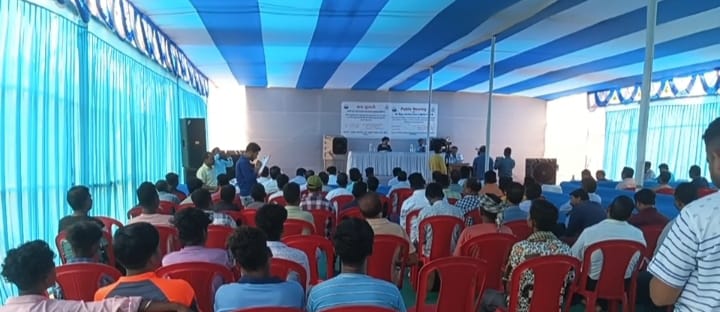The sound of the mridang has fallen silent, and the craftsmen who made these instruments have lost their livelihood. They used to make a living by creating these instruments, but now they struggle to make ends meet. This is the reality in Chandahandi, Nabarangpur district.
From temples to neighborhoods and streets, the sound of sankirtan (devotional singing) accompanied by the rhythmic beats of the mridang used to fill the air. But now, that sound is no longer heard.Artists are drawn to modern instruments, reducing the demand for traditional mridang. As a result, craftsmen who made a living creating these instruments are now struggling. In Pujariguda village, under Mohara Panchayat of Chandahandi block, there’s a family like this. Jayachandra Nag, Jogendra Nag, and Haladhara Nag’s family have been making a living by crafting mridang, Nishan, tabla, dhol, and nagada for over 30 years.They learned the art of making mridang from their father and grandfather, carrying on the traditional family profession. Earlier, they used to make over a hundred mridang every year, supporting their family through this craft.
But now, with the decline in mridang production and repair work, their livelihood has been affected. Earlier, mridang were found in many homes, and evening bhajans and kirtans would be held in village temples to the rhythmic beats of the mridang. However, that scene is no longer seen today.
Nowadays, instead of kirtan, various games are being played in villages, reducing the need for mridang. As a result, many mridang craftsmen, like them, are struggling to make ends meet, they said.
It takes around 3-4 days to make a mridang, with a cost of approximately three thousand rupees. However, it’s sold for around 3,500 to 4,000 rupees. To make a mridang, materials like clay pots, leather, and kirana (a type of metal ring) are required.
Sometimes, they have to rely on Deobhog in Chhattisgarh, Urmal, and Sinapali in Nuapada district for raw materials. With the increasing cost of all materials, it’s becoming impossible for them to support their family by making mridang. Earlier, they used to sell 30-40 mridang in the Kartik month alone, but now the sales have significantly decreased.
The craftsmen believe that with government support and incentives, similar to those given to artists, they could sustain themselves and preserve the traditional craft of making musical instruments.





